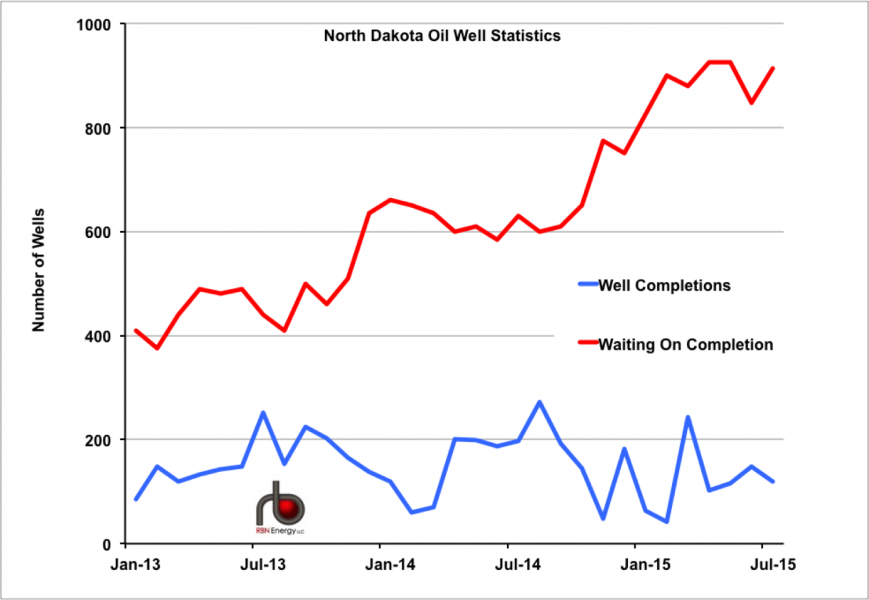From RBN Energy, Sept. 24:
Incomplete? North Dakota Has A Plan To Keep Oil Wells Unplugged
This month the North Dakota Industrial Commission (NDIC) indicated they are leaning towards leniency in their treatment of operators that have drilled but not completed wells within the one-year time frame permitted. Instead of assuming such wells are abandoned, which would otherwise mean an expired drilling permit and about $200,000 in plugging costs, – the State plans to give operators more time. That possibility opens up a whole new underground storage option for producers struggling to make ends meet. Today we explain the NDIC plan.

There has been a significant increase in State tax revenues from the oil and gas sector over the past 4 years as drilling and production from the prolific Williston Basin boomed in North Dakota. Little wonder that the State’s NDIC has done its best to keep producers actively engaged in drilling even as crude prices have fallen during the past year. To that end as we detailed back in April (2015) the State legislature has provided tax incentives to producers drilling during periods of time when prices fall below certain thresholds (see I Cannot Compete With Your Tax Scheme). There were two such tax breaks on the table this year – with the so called “small trigger” incentive providing a 4.5% break on the State’s 6.5% Extraction Tax (applied to the gross value of oil produced at the well) between February and June 2015 for all new horizontal wells when average oil prices dropped below $57.50/Bbl in January 2015. The second, “large trigger” tax break would have waived the Extraction Tax altogether for 24 months for all producers provided prices stayed below a $55/Bbl threshold for 5 consecutive months. When we last wrote on those tax breaks producers were confidently expecting to enjoy a waiver of extraction taxes after June 2015 on the assumption that the 5 month low price criteria was met. Unfortunately for them - as shown in Figure #1 below - the trigger was never pulled because average prices for the West Texas Intermediate (WTI) benchmark crude target (red line) were higher than the threshold in May and then again in June (orange dashed circle). As a result the Large Trigger was not enacted and producers did not enjoy the tax break....MORE
...The evidence from North Dakota is that the number of wells drilled and waiting on completion has increased steadily over the past two years. The chart in Figure #2 shows the number of wells waiting on completion (red line) at the end of each month since January 2013. There were 925 wells waiting on completion in April and May of this year - falling to 848 in June and then bouncing back to 914 in July 2015 (latest data). The blue line is the number of wells that have been completed – which has remained pretty consistent (averaging 150/month since January 2013) but fell by 30 between June 2015 (149) and July (118 completions). According to the NDIC the current 914 well inventory represents about 2 year’s worth of production if completed and assuming the current (September 2015) 69 operating rigs in North Dakota keep drilling at the same time. So the uncompleted wells are a safety net that can help keep production volumes up even as drilling slows down....